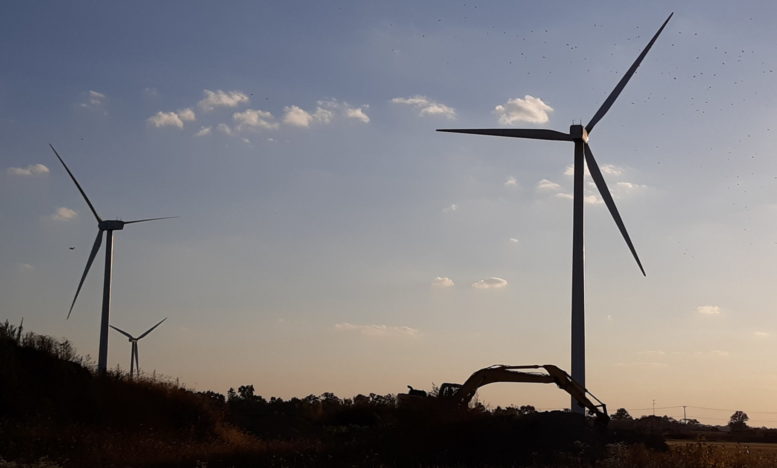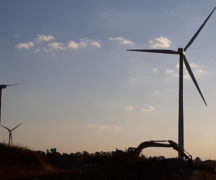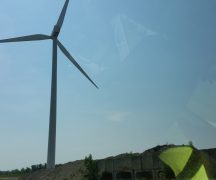By JAN LARSON McLAUGHLIN
BG Independent News
After putting Bowling Green on the green energy map nearly 20 years ago, the city’s four wind turbines have come to the end of their lives.
Bowling Green Public Utilities Director Brian O’Connell reported Monday evening that the turbines will stop spinning in 2024, when the maintenance contract for the industry dinosaurs is no longer renewable.
“Sorry to report the retirement date is coming up – but it’s time,” O’Connell said. “Nobody wants to see them go. But we knew going into it they weren’t going to be there forever.”
The wind project at the Wood County Landfill, west of the city, started generating power in 2003 with two turbines, then added two more in 2004. The original capacity of the project was 7.2 megawatts each – which was enough to supply electricity for approximately 2,500 residential customers.
The energy production was cut to 5.4 megawatts in 2021 when one of the turbines was retired early due to the expense of repairs.
The project has been a success for Bowling Green as a green energy source and a statement of the city’s values. The city had the distinction of being home to Ohio’s first utility-sized wind farm. The tall turbines stand out on the flat terrain, making them a local attraction.
“The wind turbines have been a landmark on our western horizon for two decades,” O’Connell said.
When constructed, the turbines were expected to have a 20-year lifespan. While the original manufacturer still holds a maintenance contract for the site, replacement parts are hard to find, the repairs are taking longer and the turbine productivity has suffered in the last few years.
And repairs aren’t cheap.
Failed gearboxes can cost up to $500,000 to replace. Plus arranging for a crane tall enough to make the repairs can be time-consuming.
“The operational data clearly shows the decreased output and reduced availability,” O’Connell said. “The availability goal is 90%, but year-to-date, the availability is around 55%.”
The manufacturer, Vestas, would not agree to perform maintenance past 2025, O’Connell said.
“Without a maintenance contract, it will not be possible to keep the units operational,” he told the board of public utilities Monday evening.
“We cannot avoid the inevitable,” O’Connell said. “We have kept the turbines going as long as possible, but the fact is they have reached the end of their useful life.”
AMP considered replacing the units, he said, but there are issues with the site. Most manufacturers want to put in bigger units, which would reduce the number of turbines that would fit on the site to two. To be profitable, more units would have to fit on the site.
And the costs are steep.
When the wind turbines were erected, they cost about $2 million a piece. In 2020, the cost to replace them with newer models was estimated at $8.8 million a piece.
Then there’s the close proximity of a bald eagles’ nest to the wind turbines. Last year, a landfill employee heard a thud, and saw a bald eagle fall after being struck by a turbine blade, O’Connell said.
The remaining bald eagle found another mate, and had eaglets in the same nest to the east of the landfill this year. Since the birds have “protected” status, O’Connell said it would require special permits to erect new turbines near the nest.
And lastly, the state of Ohio has made it much more difficult for wind farms to be built.
If the city is interested in purchasing wind energy, O’Connell said it would be easier to use a power purchase agreement with a private wind developer, which typically builds projects with 100 or more turbines. Those sites are less susceptible to lost generation when one of the turbines goes down for repairs.
In August, the Board of Public Utilities voted to enter an agreement to purchase wind power from the large Locust Ridge Wind Project in eastern Pennsylvania, to help power Bowling Green’s water and wastewater plants.
The city may also look at more solar power to meet its green energy goals. Bowling Green’s solar field, east of the city, is currently the largest municipal field in Ohio, generating 20 megawatts of power.
“We’ll be looking for other opportunities,” O’Connell said.



